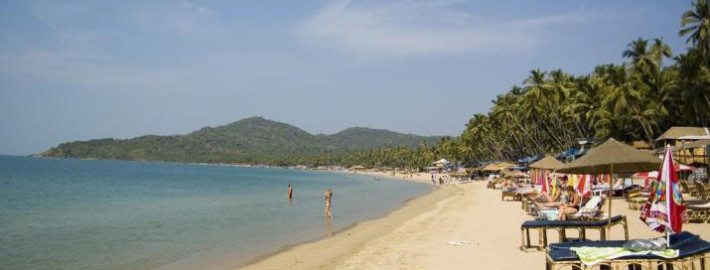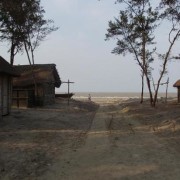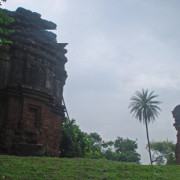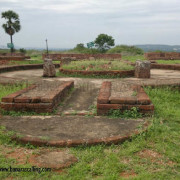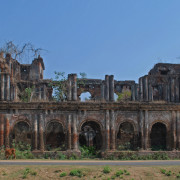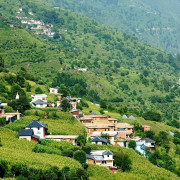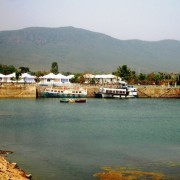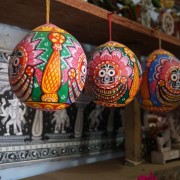Old Goa – Once the capital of Goa, this heritage spot strongly reflects the glorious Portuguese era and architectural history
Old Goa was a thriving city even before the Portuguese arrived in 1510. The place was the capital of the Bahmani Sultan Adil Shah. After the Portuguese conquest, Old Goa became a bustling metro. The place glittered with glamour at that time. As its reputation grew, the sparkling city attracted visitors from all over Europe. The city also grew rapidly in size and splendour. It was in the 18th century that the outbreaks of the epidemic plague led to its abandonment. The remains of the city is declared by the UNESCO as the World Heritage Site. It is approximately 10 kilometres east of the state capital Panjim.
Places to see in Old Goa: The sight seeing destinations of Old Goa consists of mainly Churches, chapels, and cathedrals that are an architectural delight and are considered as the largest in Asia. These include:
Chapel of St Cajetan
In 1510, the Portuguese mariner Alfonso de Albuquerque conquered Goa. The event was commemorated with the building of the Arch of the Viceroys near the Chapel of St Cajetan, which was modelled on St Peter’s basilica in Rome. This architectural style which is a reminiscent of Lisbon, gives Old Goa a grand, Portuguese feel. Today, the Procession of All Saints on the fifth Monday in Lent is the only such procession besides the one in Rome.
Se Cathedral
Lying south west of St Cajetan’s this church is larger than any church in Portugal and is the largest church in Asia. It has 14 altars, an 80m long aisle, and five bells including the Golden Bell, said to be one of the best in the world. The church is dedicated to St. Catharine.
Church of St. Francis of Assisi
Apart from the portrait of Jesus and St. Francis there are also portraits of Peter and Paul. The Archaeological Museum and Portrait Gallery function in an abandoned convent in the compound. The portrait gallery is decorated with the pictures of Portuguese rulers. The museum is open daily except Friday, from 10am to 5 pm.
Basilica of Bom Jesus
Close to the convent of St Francis, the late 16th century Basilica of Bom Jesus with its richly covered altars is famous throughout the Catholic world. This cathedral is the venue for a pilgrimage for both Christians and Hindus who come to pay homage to the embalmed mortal remains of Goa’s most famous saint, St. Francis Xavier, enshrined in a silver casket since 1553.
Convent of St. Monica
St. Monica Church rests upon the Holy Hill or the Monte Santo of Old Goa, opposite to the ruins of St. Augustine Church. It houses a huge Nunnery and is Goa’s only convent for nuns. It was given the status of a Church only in 1968, although built in 1606. The Museum of Christian Art is just adjacent to it and contains a collection of icons and artefacts used in rituals in religious ceremonies. Most of the sculptures and paintings were actually done by local Hindu artists.
Chapel of Our Lady of the Mount
The Chapel of Our Lady of the Mount is situated on top of the hill behind the St. Cajetan Church. The chapel was built in 1510 by Alfonso de Albuquerque after his victory over the Goan Muslim ruler Yusuf Shah and was renovated in 2001. The Chapel is brightly white washed and is bypassed by many tourists. The structure faces west which provides beautiful views from Divar and Chorao islands, the Mandovi River and the surrounding forested hills, especially during sunset. It also offers the overview of Old Goa where in 1510 Sultan Adil Shah’s placed his artillery to defend the city from the Portuguese assault.
St Augustine tower
The St Augustine tower in Old Goa is one of the most spectacular of monument. This highly visible landmark, a 46m-high tower served as a dome and formed part of the front of a magnificent Church. On entering the church, the visitor would have a glimpse of the grand re table of the high altar, with its large gilt tabernacle sheltered within an arch, through a screen of arched piers. Vestiges of most of these piers were visible until recently; they supported a spacious choir which could have accommodated a large number of Augustinian monks. The Tower and Church were built in 1602 by the Augustinian friars who arrived in Goa in 1587. The church fell into neglect and the vault collapsed in 1842. The church’s demise began with the collapse of this vault. The body of the church was soon destroyed, but the facade remained intact. The tower’s huge bell was moved in 1871 to the Church of our Lady of the Immaculate Conception in Panjim, where it remains and can be seen and heard today. In 1931, the facade and half the tower fell down, followed by more sections in 1938 leaving only half the tower that is seen and visited by thousands of tourists today. This remnant, the renowned St. Augustine’s tower is all that remains of what was once one of the largest buildings in Goa — The Augustinian Monastery.
Nearby attractions of Old Goa: Being a very small state, Goa has no such excursion spots. One part is Old Goa and the other is “Nova Goa” or New Goa. Here you can easily visit any destination from any place and the distance covered and time taken is not much.
Things to do in Old Goa: Sightseeing in Old Goa is all about visiting its various churches, chapels, and cathedrals that are an architectural delight and are considered as the largest in Asia.
Best time to visit Old Goa: The best time to visit Old Goa is between late October and early April. However the place has a maritime climate which makes it accessible almost the entire year.
How to go ?
By Air
Goa has an international airport at Dabolim, 29 km from the capital, Panaji. The regular domestic connections are from Mumbai, Delhi, Bangalore, Kochi and Chennai. From the airport to your hotel or to any of the towns, you can hire a cab or a metered taxi. Passengers travelling from Kolkata have to halt at Chhatrapati Shivaji Airport, Mumbai as there are no direct flights available from Kolkata to Goa.
By Train
The two main railway stations are Margao (Madgaon) and Vasco da Gama. The major connections are to Mumbai, Delhi, Bangalore, Kolkata, Rajkot and Thiruvananthapuram. From other places in the north, east and southeast you can travel to Londa Junction and then transfer to a connecting train to Margao/Vasco da Gama.
By Road
Old Goa is 9 km from Panaji; the capital city is linked by road to Mumbai, Bangalore, Belgaum, Kolhapur, Pune , Mysore and many other cities of the neighbouring states. Goa also has three national highways- NH – 4A, NH -17 and NH -17A. Buses run frequently from Panaji’s Kadamba bus terminal to various locations of Old Goa. One can also hire auto rickshaws and taxis, which are costlier but more convenient.
Where to stay ?
There are a large no. of accommodation options in Old Goa. These are:
Bambolim Beach Resort: +91-0832- 2458242, 2458247 Website: www.bambolimbeachresort.com
Old Goa Residency: +91-0832-2285327, 2285013
Ginger Hotel: +91-0 832- 664 3333 Website: www.gingerhotels.com
Hotel Ameya: +91-0832 -222 6133
Travel Tips: It is best to visit the place on foot, since there is so much of history to seep in. Local guides, some approved by the tourism department of Goa, are available.
Note : Phone numbers given above are according to the information available with us. If you find any contact number/s given above is/are incorrect or not in use, please let us know.

